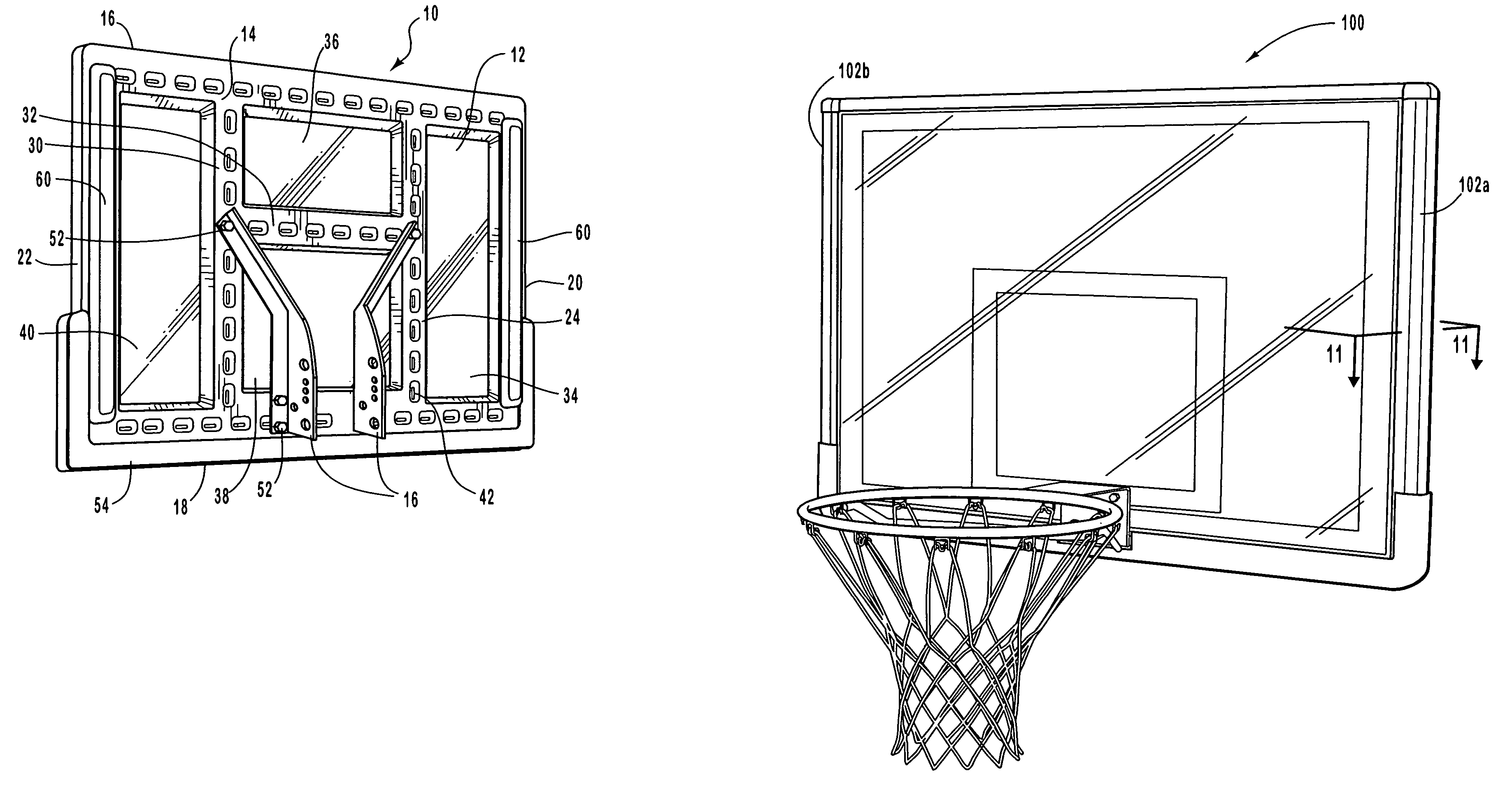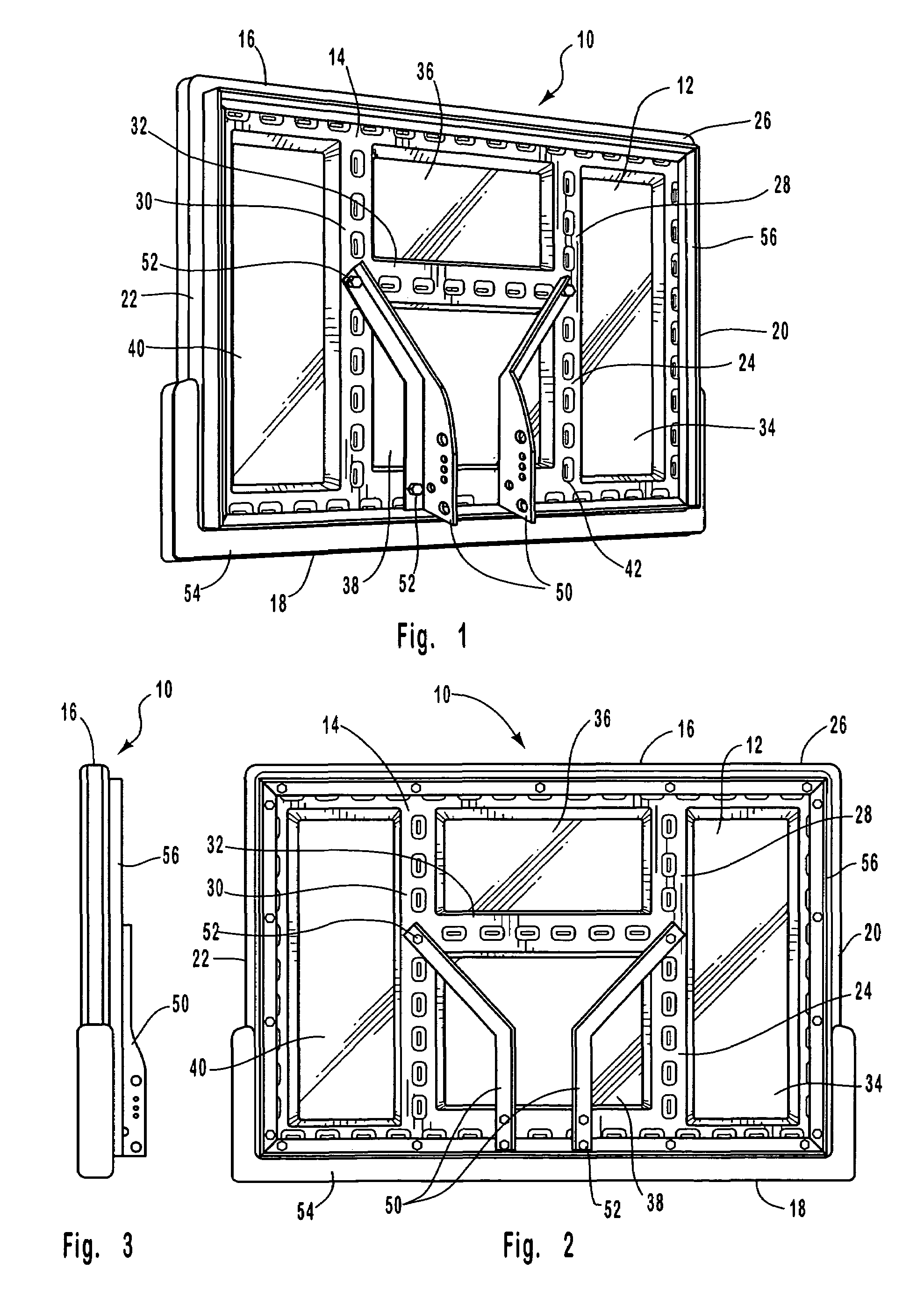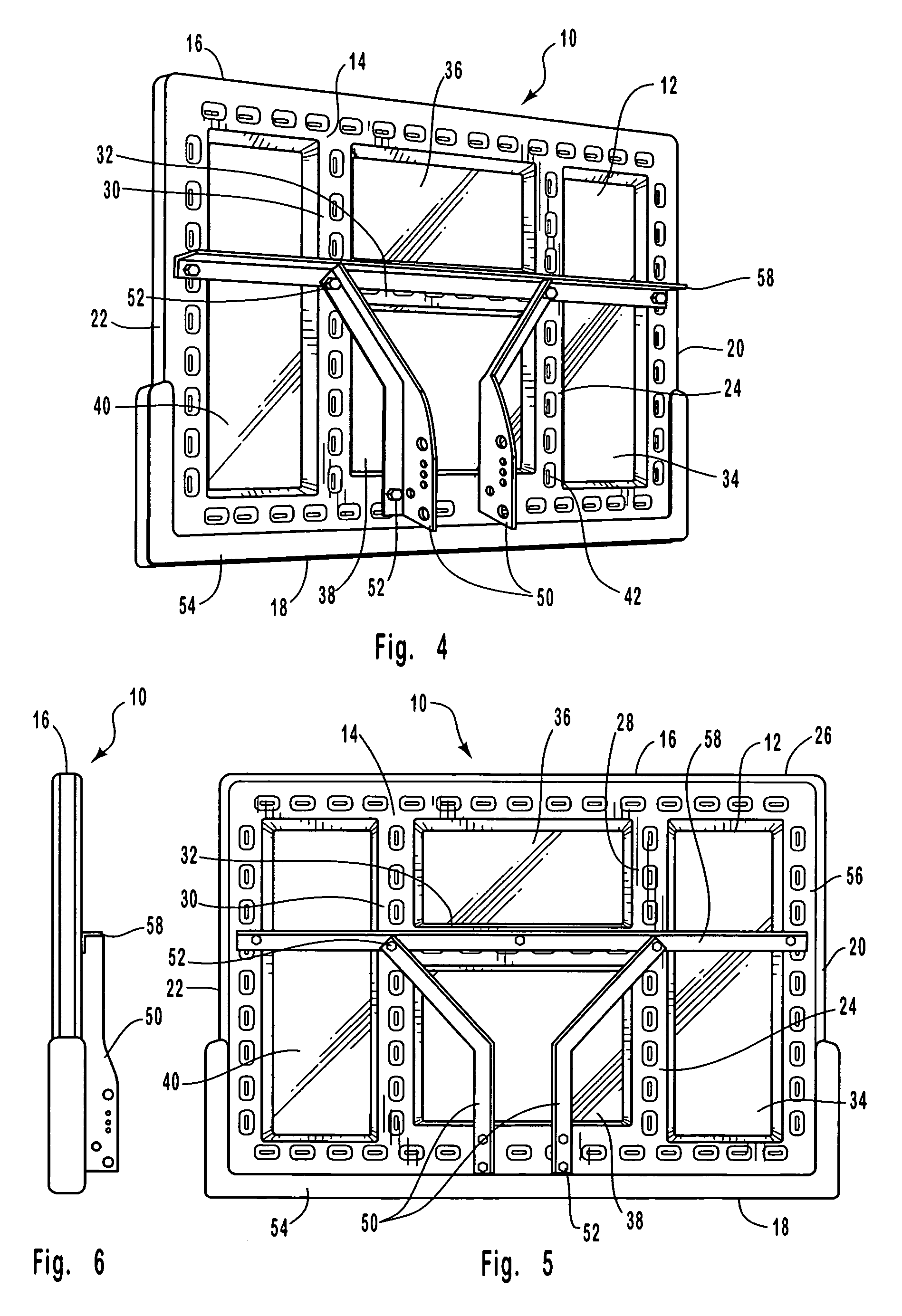Basketball backboard
a basketball backboard and basketball technology, applied in the field of basketball backboards, can solve the problems of excessive flexibility, high cost, and high cost of basketball backboards constructed from wood or metal
- Summary
- Abstract
- Description
- Claims
- Application Information
AI Technical Summary
Benefits of technology
Problems solved by technology
Method used
Image
Examples
Embodiment Construction
[0051]The present invention is generally directed towards a basketball backboard for a basketball goal assembly. In order to assist in the description of the basketball backboard, words such as top, bottom, front, rear, right and left are used to describe the accompanying figures. It will be appreciated, however, that the basketball backboard can be located in a variety of desired positions and angles. A detailed description of the basketball backboard of a basketball goal assembly now follows.
[0052]The basketball goal assembly 8 generally includes a backboard 10 and a rim or hoop 11. As shown in FIGS. 1–8, an exemplary embodiment of the backboard 10 may be constructed from two or more components that are interconnected. As shown in FIGS. 9–11, another exemplary embodiment of the backboard 10 may also be constructed from a single piece of material or component. The basketball goal assembly 8 may be part of a permanent or portable basketball system that may include, for example, a su...
PUM
 Login to View More
Login to View More Abstract
Description
Claims
Application Information
 Login to View More
Login to View More - R&D
- Intellectual Property
- Life Sciences
- Materials
- Tech Scout
- Unparalleled Data Quality
- Higher Quality Content
- 60% Fewer Hallucinations
Browse by: Latest US Patents, China's latest patents, Technical Efficacy Thesaurus, Application Domain, Technology Topic, Popular Technical Reports.
© 2025 PatSnap. All rights reserved.Legal|Privacy policy|Modern Slavery Act Transparency Statement|Sitemap|About US| Contact US: help@patsnap.com



